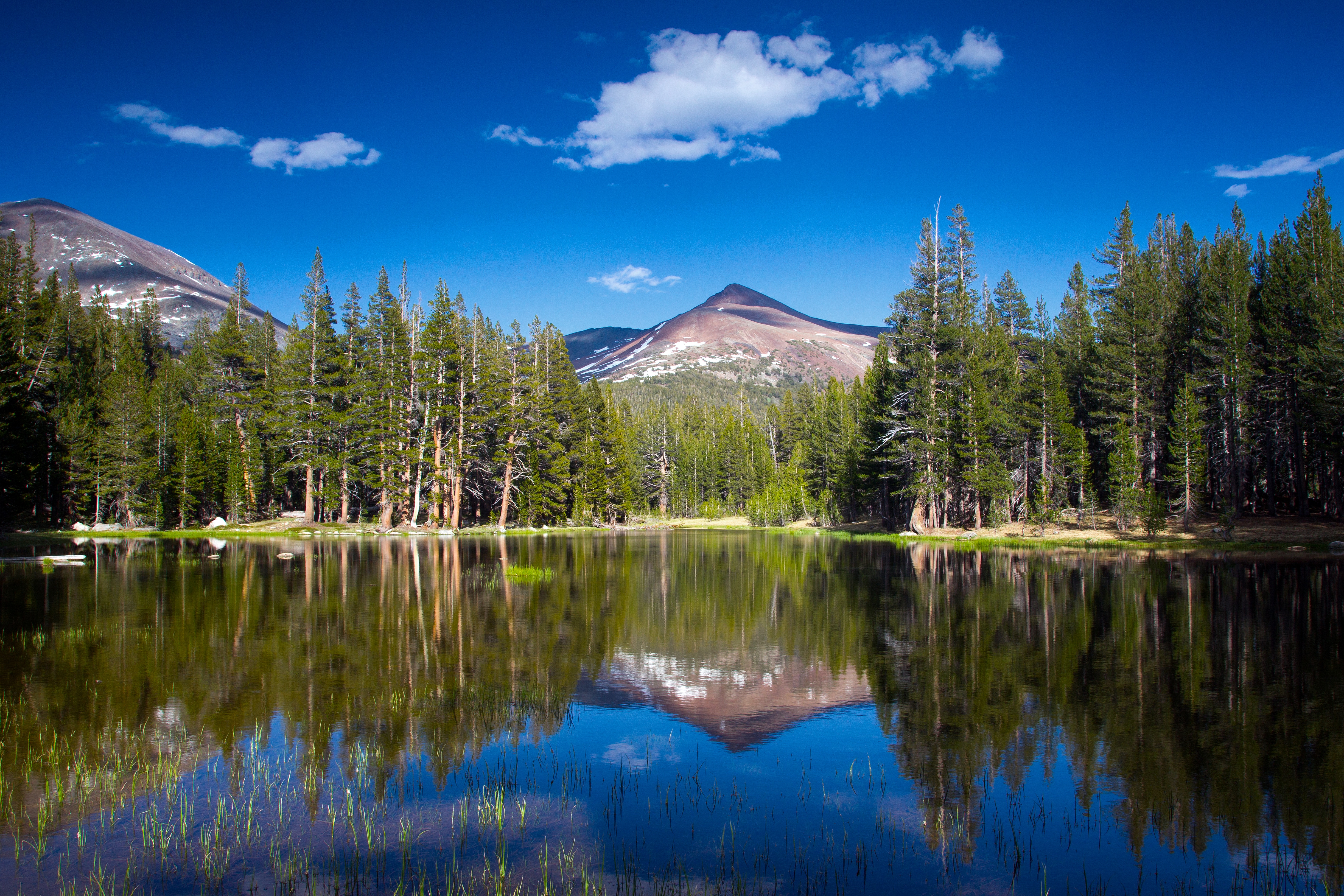The following list is designed for a non-guided backpacking trip in Yosemite. If you’re going with a commercial group, check with the guide company to see what items they provide. But for those looking to take on the adventure themselves, this list serves as a great starting point for planning your trip.
Included in this list are the Ten Essential Systems you should have on every backcountry trip: navigation; sun protection; insulation; illumination; first-aid supplies; fire starter; repair kit and tools; nutrition; hydration; emergency shelter. To learn more, see our Ten Essentials article.
Equipment
- Backpack that’s large enough to hold a bear canister
- Pack raincover
- Small daypack (optional)
- Tent with guylines and repair sleeve
- Tent footprint (optional)
- Sleeping bag (15°–29°; or suitable for the season you go)
- Sleeping pad
- Whistle (plus signaling mirror)
- Multifunction watch with altimeter (altimeter feature is optional)
- Knife or multi-tool
- Compass
- GPS (optional)
- Map(s) and route description or guidebook
- Trekking poles (optional)
- LED headlamp with extra batteries
- Water filter and backup treatment system
- Stove, fuel and repair kit
- Matches or lighter
- Cookset, dishes, bowls, utensils, cups (measuring/drinking)
- Bear canister
- Repair kit for mattress; duct tape strips
- Fire starter (for emergency survival fire)
Clothing and Footwear
- Wicking, quick-drying underwear
- Wicking, quick-drying sports bra
- Wicking, quick-drying long underwear
- Wicking, quick-drying T-shirt and long-sleeve shirt
- Quick-drying pants
- Quick-drying shorts (optional)
- Fleece jacket or vest, or insulated jacket or vest
- Fleece pants (optional)
- Waterproof/breathable rain jacket
- Waterproof/breathable rain pants
- Bandana or Buff
- Sun-shielding hat or ball cap
- Winter hat
- Gloves or mittens
- Hiking boots or hiking shoes suited to terrain
- Socks (synthetic or wool) plus spares
- Gaiters (optional)
- Sandals (for fording streams and relaxing in camp) or water shoes
- Swimwear (optional, but highly recommended)
Personal Items
- Nitrile-dipped gloves (optional, to grip cables if you hike up Half Dome)
- Sunglasses
- Water bottles (3) or hydration reservoirs
- Sunscreen
- Lip balm
- Toothbrush with cover, floss, biodegradable toothpaste
- Biodegradable soap
- Toilet paper
- Sanitation trowel
- Hand sanitizer
- Women’s hygiene items
- Personal wipes
- Plastic zip-top bags
- Insect repellent
- First-aid kit (see our First-Aid Checklist)
- Quick-drying towel
- Spare eyeglasses or contact lenses
- Medications
- Camera or helmet cam and extra memory cards (optional)
- Binoculars (optional)
- Cell phone (don’t rely on service)
- Satellite communicator / personal locator beacon (optional)
- Field guide(s); star identifier (optional)
- Journal, pen and e-reader or reading material (optional)
- Portable power device (optional)
- Fishing gear and permit(s) (optional; available at stores within the park)
- Credit card; small amount of cash
- National Parks pass (yearly pass available from REI.com)
- Wilderness permit
- Trip itinerary left with friend and under car seat
Food
Quantity varies depending on activity and length of trip.
- Breakfast (oatmeal, granola, freeze-dried breakfast, etc.)
- Lunch (bagels, summer sausage, cheese, smoked salmon, etc.)
- Dinner (pasta, couscous, rice, freeze-dried dinner, etc.)
- Snacks (cookies, GORP, jerky, candy bars, dried fruit, etc.)
- Energy gels
- Energy bars
- Electrolyte replacement drink mix
- Extra day’s supply of food
